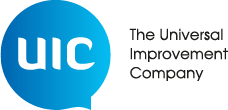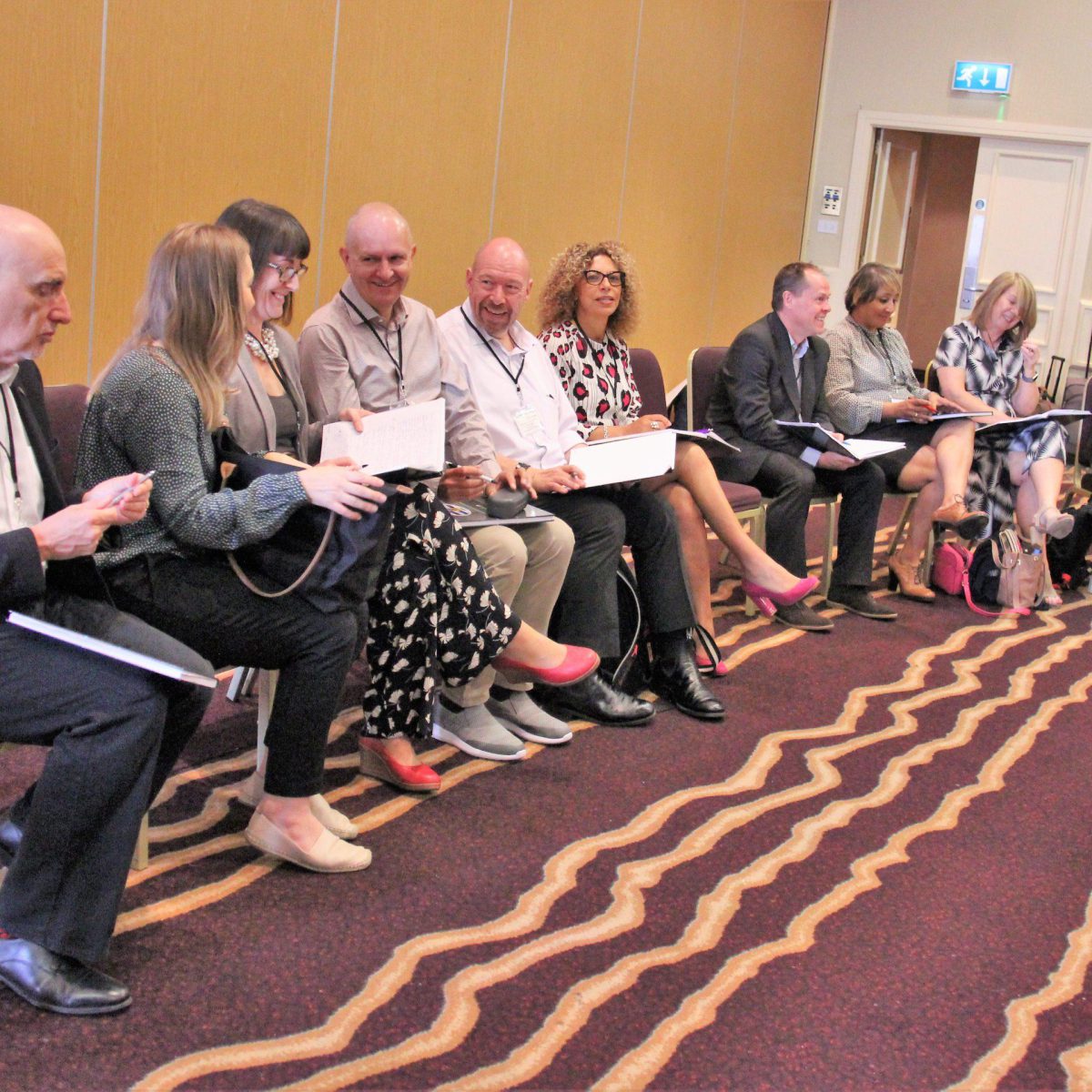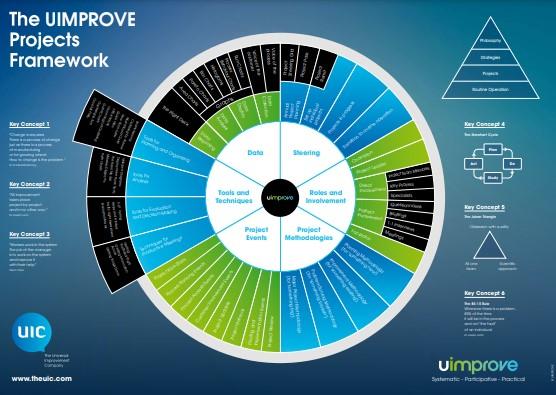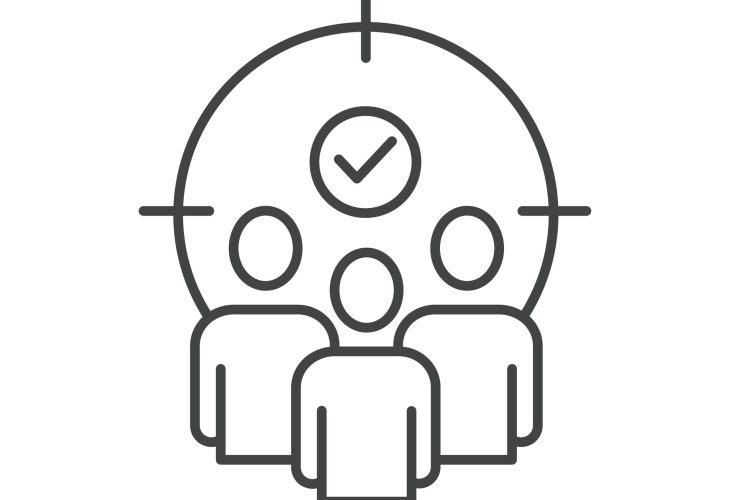Take note! Why Notebooks should matter to leaders
There are ebbs and flows in organisational trends when it comes to technology and its use in meetings.
While the era of the laptop (and burgeoning AI) has made minuting more efficient, paper Notebooks still have a critical role to play in enabling individual reflection and setting the tone for team collaboration – facets of organisational life that are becoming increasingly important.
The use of this seemingly humble bit of kit should matter to leaders. Read on to find out why.
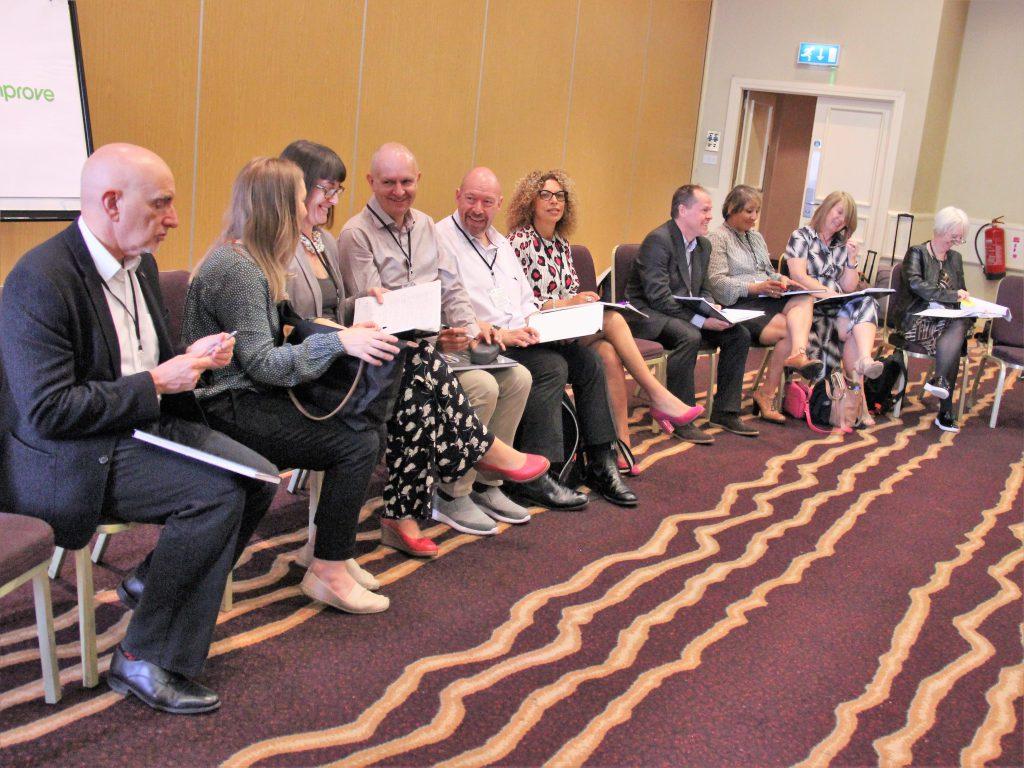
Assorted UICers at the 2019 UIMPROVE Conference
The handwriting renaissance
I spent a disproportionate amount of my Maternity Leave during 2022 wandering dazed around Wilkos (R.I.P.), eyeing up all the lovely Notebooks I didn’t have time to write in, taking an indulgent meander down the stationery aisle in between picking up household essentials.
The sheer volume and variety were notable. The design and nomenclature are an interesting cultural artifact of our times, leaning into both the productivity paradigm (the ‘hustle’) and the wellness/journalling zeitgeist. One is about doing, the other about reflecting. In both cases, the target buyers are those focused on improving themselves as individuals.
Covid-19 brought about an uptick in sales of paper Notebooks and this trend looks set to continue. This increase was predominantly among domestic consumers, spending more time at home and often on new pursuits that require some planning and brainstorming, not to mention all that time people now had for reflection (I knew at least a dozen people who took up The Artist’s Way and Morning Pages during lockdown).
We could also speculate that Notebooks also present an analogue antidote to a largely digitised world where a few hegemonic platforms dominate the bulk of our communications.
Meanwhile, organisations have continued to digitise for sensible environmental reasons and in line with the ongoing shift to hybrid working; but are they missing a trick by not normalising and systematising a tool that so encourages reflection and creativity?
What we know about the science of writing
There is plenty of evidence that handwritten notes provide a better aid to recall than type-written.
Handwriting activates unique neural pathways in the brain, leading to better retention and understanding of information. Studies have shown that students who take notes by hand tend to remember the material better than those who type their notes, as the process of handwriting encourages deeper processing of the content.
This should matter not just to learning professionals, but to team leaders at every level. After all, learning and information processing is not something confined to classrooms.
Why Notebooks are a vital tool in Team Meetings
The cognitive benefits of handwritten notetaking are scalable at a team and organisation level, and include:
(1) Enhanced memory and learning: as evidence suggests, handwritten notes can lead to better recall and understanding of complex information.
(2) Boosted creativity and problem-solving: the freedom offered by the act of writing by hand can unlock creative thinking and enhance problem-solving abilities. All power to the doodle!
(3) Better team relations: removing digital devices minimises distractions, fostering better listening and attentiveness
(4) Personalization and emotional connection: handwritten notes can create a more personal connection to the work and encourage a sense of ownership and pride.
(5) Embedding reflective practice: Beyond basic recall there is an argument for using Notebooks as a key tool for reflective practice, which in turn has a strong body of evidence supporting its pivotal role in improving individual, team and organisation performance.
Reflective practice can often be confined to learning and development as opposed to being a key component of organisational life, emobodied in the way meetings are run and decisions get made.
(6) Welcome time away from the screen: in a world where the bulk of meetings are now held on-line, the opportunity to think and engage away from a computer screen can be a welcome break for those at risk of digital fatigue.
A note on optics
We regularly encounter arguments in favour of laptop use in Team Meetings as this is a more efficient way of notetaking which offers more immediate shareability.
We don’t dispute these claims but would encourage all clients – and indeed readers of this blog – to pause and consider the change in dynamic when someone sits with an open Notebook and pen as opposed to a laptop.
Even in the most trusting of colleague relationships, a laptop screen is a barrier. And in reality, we regularly encounter organisations where participants engage in doing something entirely different while a colleague is speaking, and this culture is completely normalised. This is quite often a result of capacity challenges; but the productivity gains made from people being fully present at well-run meetings may present part of the solution,
Taking a blended approach
In an increasingly hybrid world, the most practical solution is to take a blended approach. Each team will have its optimum blend based on the nature of their work and the information they need to share.
The table below offers some guidance:
| Individual | Collective | |
| Paper | Notetaking from Briefings/Presentations
Questions Reflections Bright ideas 1-1 preparation |
Team Meeting actions (each person should note their actions and not rely on minutes/flipcharts)
Reflections following Briefings/Presentations |
| Digital | Capturing/presenting technical information
Formal presentations
|
Quick polls e.g. Menti
Updating project documentation e.g. trackers, Gantt Charts
|

Mandating Notebooks and an organisational norm – tips for leaders
Even the most senior leaders who go through UIMPROVE training complete a session called ‘How to use a Notebook’ – which occasionally raises a few eyebrows.
The reason we cover it is that we know from experience what a transformation it can make to the productivity and enjoyability of meetings.
Some tips for leaders looking to encourage Notebook use in their teams:
(1) Explain their value in the context of how Team Meetings are going more broadly. Ask people in advance how they think things are going. Get their input upfront.
(2) Issue every new starter with a Notebook, ideally branded, A4 and hardback. Make it nice to use and a source of pride. Explain that they are expected to use them at Team Meetings and 1-1s
(3) Gently challenge anyone who turns up to meetings without their Notebook. Of course, there will be people who, for specific reasons, need to use a different device to take notes, but this should have been established in the early days of on-boarding.
This will not be in the comfort zone of many leaders and managers. However, the dividends in terms of team cohesion and productivity are worth the effort and potential push-back.
Conclusion
The use of this seemingly basic tool connects to a much bigger picture. In a world that requires increasingly creative solutions to complex problems, enablers of both individual reflection and collective accountability become vital.
Digital tools can be great enablers of transparency through the immediate shareability of information; however authentic trust between individuals is built in subtler ways, often through the habits they adopt. Having Notebooks at the ready is a great start.

Blog post written by Lucy O’Melia, Associate Consultant for the UIC.
Contact lucy@theuic.com to discuss all things teams, meetings and organisational improvement.
